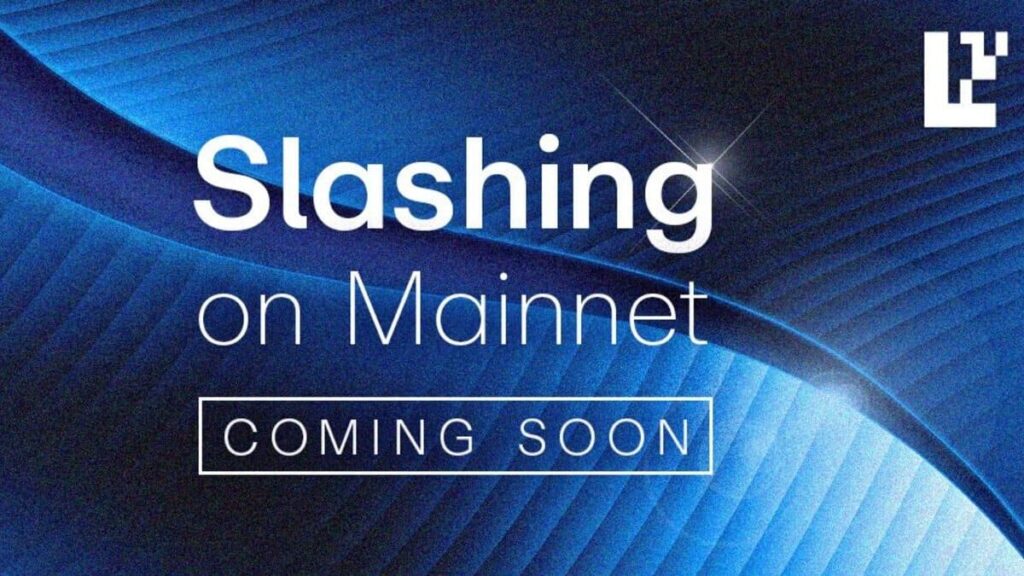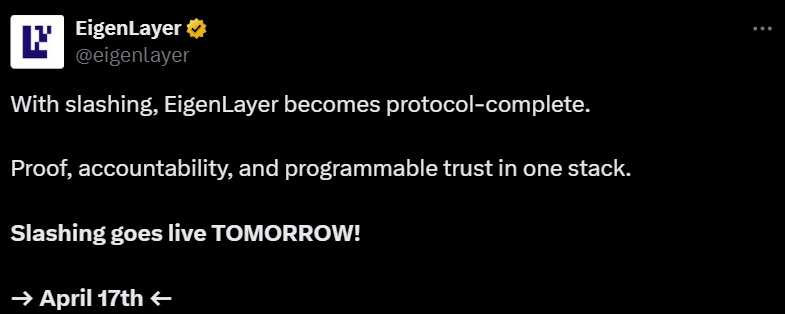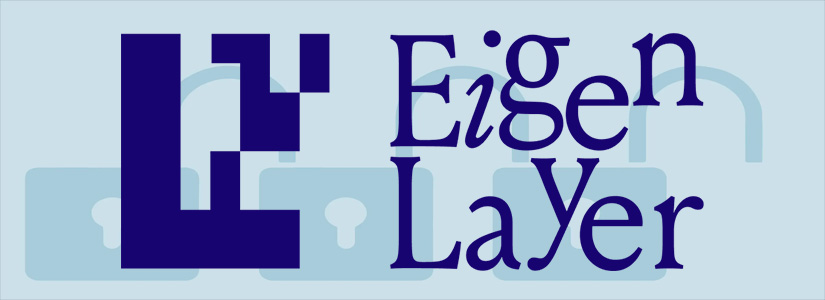TL;DR
- EigenLayer activated slashing, a feature that allows penalizing malicious operators by removing part or all of their restaked collateral.
- Each validated service will be able to define its own penalty rules, enabling a progressive and controlled implementation.
- The system redesign eliminates cross-leverage and limits exposure per service, reducing systemic risks in the shared security model.
EigenLayer incorporated the slashing feature on Thursday, a tool designed to penalize operators who behave maliciously.
The move comes one year after the launch of its mainnet and aims to address one of the main criticisms the protocol received: the lack of effective accountability mechanisms within its shared security model.
How Will Slashing Work on EigenLayer?
The restaking protocol allows users to deposit ETH on Ethereum and then reuse it as collateral in other validated services. This practice generates higher yields but also introduces other risks if there are no clear sanctions for improper behavior. Slashing seeks to solve this by removing part or all of the collateral from those who compromise the system’s security.
Since its launch, EigenLayer has accumulated over $7 billion in restaked assets and validated 39 different services. However, the absence of concrete penalties weakened its technical proposition. With slashing activated, validated services (AVSs) will be able to define their own conditions for punishing operators. Each team must choose to activate the tool, so implementation will be gradual.
The system was redesigned last year to prevent an error or attack on a single service from impacting the entire network. Operators can now limit their exposure to specific services, reducing contagion risk. This prevents a single incident from compromising funds across multiple participants. In addition, the new model eliminates internal leverage that previously allowed a single stake to back multiple services simultaneously.
The design ensures that each AVS has a clearly defined amount of capital subject to slashing. This specific attribution prevents double counting and reinforces system transparency. While some protocols like Solana still operate without active penalty mechanisms, EigenLayer chose to prioritize this component from the beginning of its development, which raised expectations around its implementation.
The new version of the protocol has been tested on devnets since December. Its deployment marks a technical advance aimed at strengthening Ethereum’s ecosystem security without compromising validator efficiency or user incentives.













